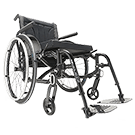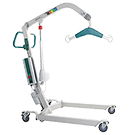
Spotlight on Childhood Stroke During National Stroke Week
It may be perceived as a risk to older people, but did you know that children are also vulnerable to stroke?
According to a US study, the risk of acute ischemic stroke is about 1 in 4,000 for babies less than 30 days old, falling to 2-to-8 in every 100,000 in older children.
How common is childhood stroke?
You might think that childhood stroke is rare, so you might be surprised to know that a week old baby is three times more likely to suffer a stroke than an adult who smokes and suffers from diabetes and hypertension. Stroke appears in the list of 10 biggest killers of children, and while the reasons are still unclear, the good news is that the window for recovering motor skills following brain damage from a stroke is much larger for children than it is for adults.
Children and recovery from stroke
The good news for childhood sufferers of stroke is that recovery times are excellent if help is sought early. With an individualised approach to rehabilitation children continue to show improvements up to and beyond 12 months after the event, where the window for improvement in adults is closer to 3 months only. It has also been suggested that the greater plasticity of the infant brain makes it easier to adapt and to overcome any stroke impairments.
What are the early warning signs?
There are a number of early warning signs when it comes to stroke, and it’s important to act fast and seek medical help as soon as possible if you notice the following symptoms (represented by the acronym FAST).
Face: Check their face. Has their mouth drooped?
Arms: Can they lift both arms?
Speech: Is their speech slurred? Do they understand you?
Time: Time is critical. If you see any of these symptoms Act FAST and call 000.
Childhood strokes can also result in less common symptoms such as seizures or fits affecting one part of the body or a new onset sudden severe headache. Additionally, lots of children will have non-specific signs of illness, such as a decrease in conscious level or vomiting. As always, if in doubt seek immediate medical assistance.
How you can help during National Stroke Week
National Stroke Week is taking place from Monday 4 to Sunday 10 September 2017 in Australia. During that week, thousands of Stroke Week Activities will be happening in communities all across the country, including information stalls, health checks and fundraising for the Stroke Foundation. As part of National Stroke Week, the Stroke Foundation wants every Australian household to be aware of the signs of stroke. You can help by sharing the FAST signs of stroke with your friends, family and colleagues – the life you save could be your own.
For more information about childhood stroke and National Stroke Week activities you can visit the Stroke Foundation website at https://strokefoundation.org.au.










